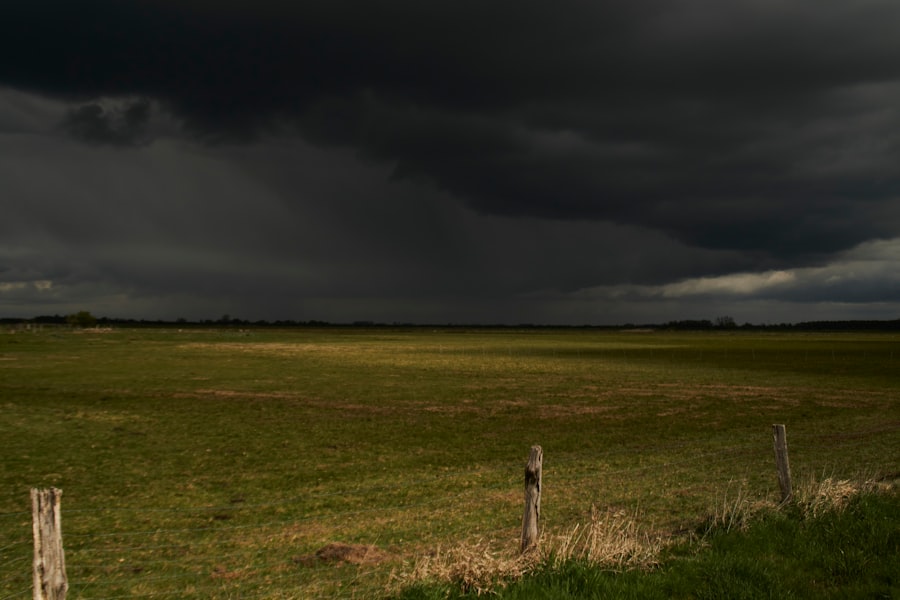The path of destruction left by a tornado is often a stark reminder of nature’s raw power. As the swirling winds descend from the sky, they carve a chaotic trail through communities, uprooting trees, demolishing homes, and leaving behind a landscape that resembles a war zone. The sheer force of these storms can obliterate structures in mere moments, transforming once-thriving neighborhoods into desolate expanses of debris.
The aftermath is not just a physical wreckage; it is a profound disruption of lives, as families grapple with the sudden loss of their homes and the familiar surroundings that once provided comfort and security. Witnesses often describe the experience as surreal, with the sound of the tornado resembling a freight train barreling through. The visual spectacle of dark clouds swirling ominously overhead can be both mesmerizing and terrifying.
As the tornado touches down, it creates a vortex of destruction that can extend for miles, leaving a path that is often several hundred yards wide. The unpredictability of tornadoes adds to their danger; they can change direction without warning, catching even the most prepared off guard. This unpredictability underscores the importance of understanding tornado behavior and the need for effective warning systems to alert communities in advance.
Lives Lost and Homes Destroyed:
The human cost of tornadoes is often staggering, with lives lost and families shattered in an instant. Each statistic represents a person—a mother, a father, a child—whose life was irrevocably altered by the storm. In the wake of such disasters, communities mourn not only for those who have perished but also for the dreams and aspirations that have been swept away.
The emotional toll is profound, as survivors grapple with grief and loss while trying to make sense of their new reality. In addition to the tragic loss of life, countless homes are destroyed or rendered uninhabitable. Families are displaced, forced to seek shelter with relatives or in temporary accommodations.
The destruction extends beyond physical structures; it disrupts the very fabric of community life. Schools may be damaged, businesses may close, and essential services can be interrupted, leaving residents feeling vulnerable and isolated. The challenge of rebuilding is compounded by the emotional scars left behind, as individuals and families navigate their grief while trying to find a way forward.
Community Response and Relief Efforts:

In the face of devastation, communities often come together in remarkable ways to support one another. Local organizations, volunteers, and government agencies mobilize quickly to provide relief efforts, offering food, shelter, and emotional support to those affected by the tornado. Neighbors who may have never interacted before find themselves united in a common cause: helping each other rebuild their lives.
This spirit of solidarity can be a powerful force for healing, as individuals share resources and lend a helping hand to those in need. Relief efforts typically include setting up emergency shelters, distributing supplies such as clothing and food, and providing mental health services to help individuals cope with trauma. Fundraising initiatives often spring up in response to the disaster, with community members organizing events to raise money for those who have lost everything.
These collective efforts not only provide immediate assistance but also foster a sense of hope and resilience among residents as they work together to recover from the storm’s impact.
Tornado Preparedness and Safety Tips:
| Category | Tips |
|---|---|
| Emergency Kit | Prepare a kit with water, non-perishable food, flashlight, batteries, first aid supplies, and important documents. |
| Safe Shelter | Identify a safe place in your home, such as a basement or interior room, to take shelter during a tornado. |
| Warning Signs | Be aware of dark, greenish skies, large hail, and a loud roar, as these can be signs of an approaching tornado. |
| Family Communication | Establish a communication plan with your family members in case of a tornado, and practice it regularly. |
| Stay Informed | Keep a battery-powered weather radio or smartphone with emergency alerts to stay informed about tornado warnings. |
Preparedness is key when it comes to minimizing the impact of tornadoes on communities. Understanding the signs of an impending tornado and having a plan in place can save lives. Residents are encouraged to stay informed about weather conditions through local news outlets and weather apps that provide real-time updates.
Having a designated safe space within homes—such as a basement or an interior room on the lowest floor—can provide protection during severe weather events. In addition to having a safe location, individuals should create an emergency kit that includes essential supplies such as water, non-perishable food, flashlights, batteries, first aid supplies, and important documents. Regularly practicing tornado drills can also help families feel more prepared and less anxious when severe weather strikes.
By fostering a culture of preparedness within communities, residents can enhance their resilience against future tornadoes and reduce the potential for loss of life and property.
Rebuilding and Recovery:
The journey of rebuilding after a tornado is often long and arduous. Once the immediate danger has passed and relief efforts are underway, communities must confront the daunting task of reconstruction. This process involves not only repairing physical structures but also addressing the emotional needs of those affected.
Many families face significant financial challenges as they navigate insurance claims and seek assistance from government programs designed to aid recovery. Rebuilding efforts often require collaboration between local governments, non-profit organizations, and community members. As neighborhoods begin to take shape again, there is an opportunity for residents to come together to create spaces that reflect their shared experiences and resilience.
This can include designing parks or community centers that serve as gathering places for healing and connection. The act of rebuilding becomes not just about restoring what was lost but also about creating a stronger foundation for the future.
Impact on Local Businesses and Infrastructure:

Tornadoes have far-reaching consequences that extend beyond individual homes, affecting local businesses and infrastructure as well.Economic Devastation
When a tornado strikes, it can lead to significant economic losses as shops are damaged or destroyed, leaving owners struggling to recover. The ripple effect can be felt throughout the community as employees lose their jobs and local economies suffer from decreased consumer spending.
Infrastructure Damage
Infrastructure damage can further complicate recovery efforts. Roads may be blocked by debris, making it difficult for emergency services to reach affected areas or for residents to access essential resources. Utilities such as electricity and water may be disrupted, adding another layer of challenge for those trying to rebuild their lives.
Community Recovery Efforts
Communities must work together to restore these vital services while also supporting local businesses in their recovery efforts.
Emotional Toll and Trauma:
The emotional toll of experiencing a tornado can be profound and long-lasting. Survivors often face feelings of anxiety, depression, and post-traumatic stress disorder (PTSD) as they navigate the aftermath of such a traumatic event. The suddenness of loss—whether it be homes, possessions, or loved ones—can leave individuals feeling disoriented and vulnerable.
It is crucial for communities to recognize these emotional challenges and provide support systems that address mental health needs. Counseling services, support groups, and community outreach programs can play an essential role in helping individuals process their experiences and begin to heal. Sharing stories with others who have faced similar challenges can foster connection and understanding, allowing survivors to feel less isolated in their grief.
By prioritizing mental health alongside physical recovery efforts, communities can create an environment that promotes healing and resilience.
Lessons Learned and Future Prevention Measures:
In the wake of devastating tornadoes, communities often reflect on lessons learned that can inform future prevention measures.
Enhanced technology allows for more accurate forecasting and timely alerts, giving individuals crucial minutes to seek shelter.
Additionally, community education initiatives focused on tornado preparedness can empower residents with knowledge about safety protocols and emergency plans. Schools can play a vital role in this education by incorporating safety drills into their curricula. By fostering a culture of preparedness and resilience, communities can better equip themselves to face future storms with confidence.
Ultimately, while tornadoes may leave behind destruction in their wake, they also present opportunities for growth and renewal. Through collective efforts in rebuilding, supporting one another emotionally, and learning from past experiences, communities can emerge stronger than before—ready to face whatever challenges lie ahead with courage and determination.
The devastating tornado that recently hit Oklahoma has left many residents wondering when tornado season typically occurs in the state. According to a helpful article on tornadoextreme.com, tornado season in Oklahoma typically peaks in the spring and early summer months. For more information on tornadoes and how to stay safe during severe weather events, be sure to check out their website.

